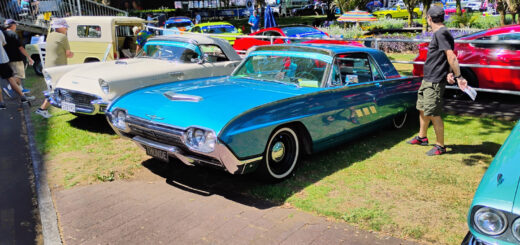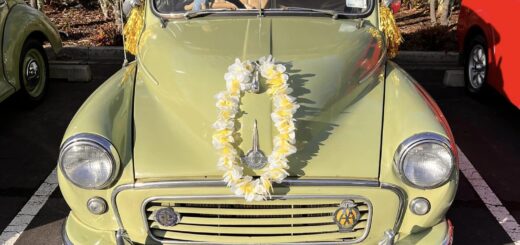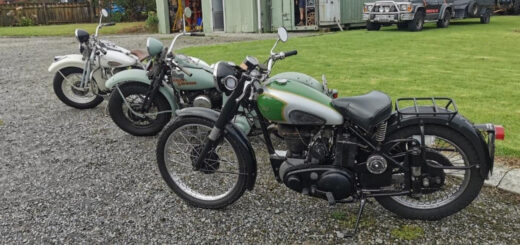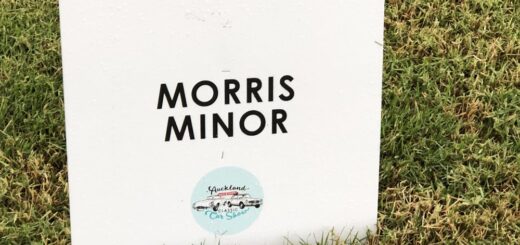This article sourced from Minor Mania
If you’re going to go faster you have to be able to stop quicker!
When well maintained and working to the manufacturers specifications, the standard Morris Minor brakes are actually very effective. Sure, they do suffer from brake fade when they get hot, but that’s an inherent problem with drum brakes, not with the Minor itself.
Problems arise when the brake system is not working at its best. Which is to say, most of the time, especially as the cars are all 35 to 50 years old now and not everyone has the time, money or patience to renew the entire braking system. It’s money well spent, but it’s money that only a few will be prepared to part with.
So, what do you do?
Well, for starters, make sure that your Minor has brake shoes with plenty of meat left on them. They should be at least 3mm thick and preferably thicker. What may have been perfectly usable 40 years ago may well be borderline now. This is because the drums themselves will probably no longer be perfectly round or may even have worn down and therefore are now a (slightly) wider diameter. Only 0.5mm less metal on one side means 1mm overall, and that’s 1mm of adjustment that your brakes probably don’t have.
Have your drums checked for thickness and roundness, and replace all the brake shoes.
CAUTION
Although they have probably been replaced with newer pads with modern materials by now, be careful of breathing in brake dust! Older brake pads contained asbestos so breathing in the brake dust from these pads is dangerous! Don’t blow out the dust from the drums. Use a water spray bottle or proper brake cleaner and dampen everything down first then wipe it clean. It’s slower and harder, but it’s Not Bad For You!
Larger Drums
Minors built prior to 1962 have 7 inch diameter drums on the rear and 7 inch diameter drums on the front. I’m not certain about the Series MM Minor, but all other models can be uprated to use the later 8 inch drums on the front, as used on the 1098 Minor 1000. This is a straightforward swap, simply remove the old drums, slave cylinders and backing plate and replace them with the larger ones, after you’ve cleaned, checked and replaced any worn parts of course!
Other vehicles in the BMC range also used larger rear drums. The Riley 1.5 and the Wolesely 1500 both used an axle with 8 inch rear drums. These axles can be swapped for the Minor axle giving not only larger brakes, but a different selection of differential ratios. Very useful if you’ve uprated your engine already.
Boosters
Brake boosters are another way of improving your braking system, but bear in mind they do not make your brakes any better, they just make it easier to put more pressure on the brake pads. The braking potential is the same with or without a booster, it’s just easier to apply.
The simplest booster to fit is an inline booster such as the Lockheed VH44. This was a very common booster fitted to British cars thoughout the 60’s and 70’s and you should be able to find one at your nearest wreckers yard. The VH44 is a big large though at about 9 inches in diameter so it takes up a lot of the spare room on one side of the engine bay. A bit of hunting around should turn up a Japanese unit that will be both smaller and newer.
As always, have the booster unit thouroughly checked out before fitting it to your car. The last thing you want is for something to break or burst when you next press the brakes a bit hard.
Disc Brakes
“Disc brakes do not make you stop quicker than with drums brakes. They are no better than properly maintained drums.”
Although this sounds unlikely, the above statement is actually true, to a point. If the surface area of the discs that is used for breaking is about the same size as the surface area of the inside of the drum then braking efficiency is very similar, so the statement is correct. But, the big difference lies in how often the brakes can be used and for how long before heat buildup causes brake fade. Drum brakes suffer badly from fade, discs do too but not as badly since the disc is out in the open air and the heat can dissipate far more readily than from inside a drum.
Popular disc brake conversions include using the disc from the Morris Marina or Vauxhall Viva. Fiat discs can also be fitted, but the Marina and Viva both offer stud patterns that allow you to use the original Minor wheels.
The early Morris Marina has the same stud pattern as the Minor and as such may be the better choice for you when deciding which model/year Marina to acquire your discs from.
There are a number of kits available on the market that supply all the necessary bits and pieces to convert your Minor from drums to discs, and these should be considered first when doing a disc brake conversion. The research and development has been done for you and you know the kit will work – if it doesn’t, you’ve got the law on your side.





